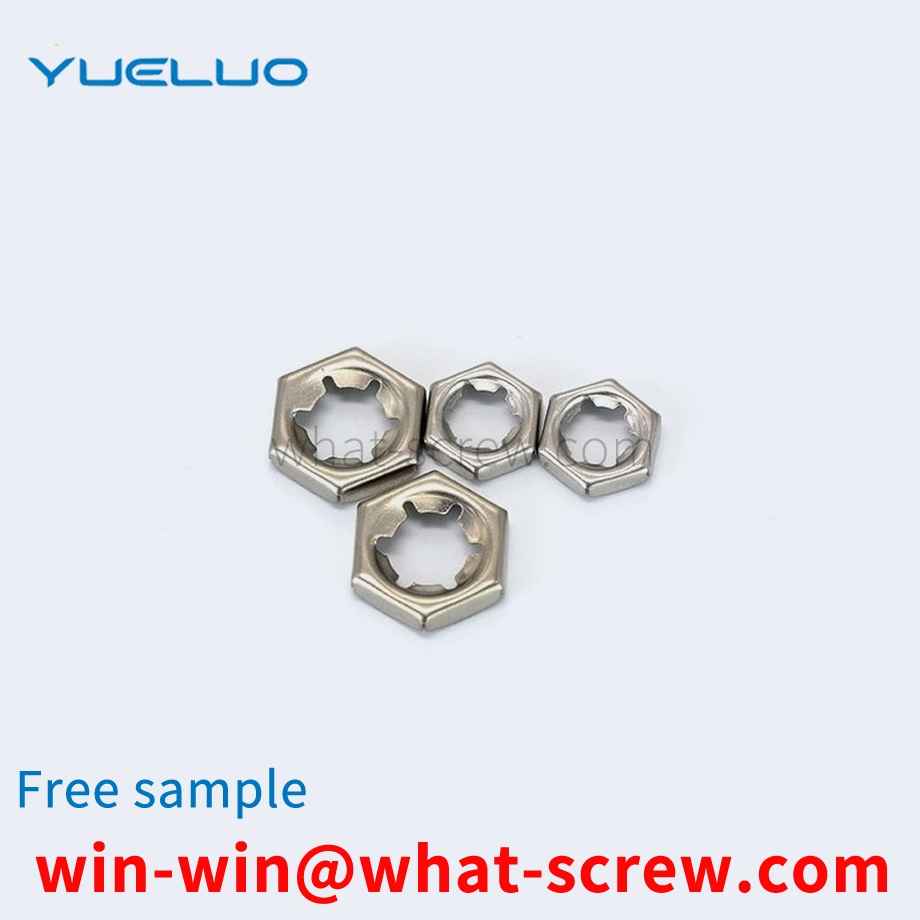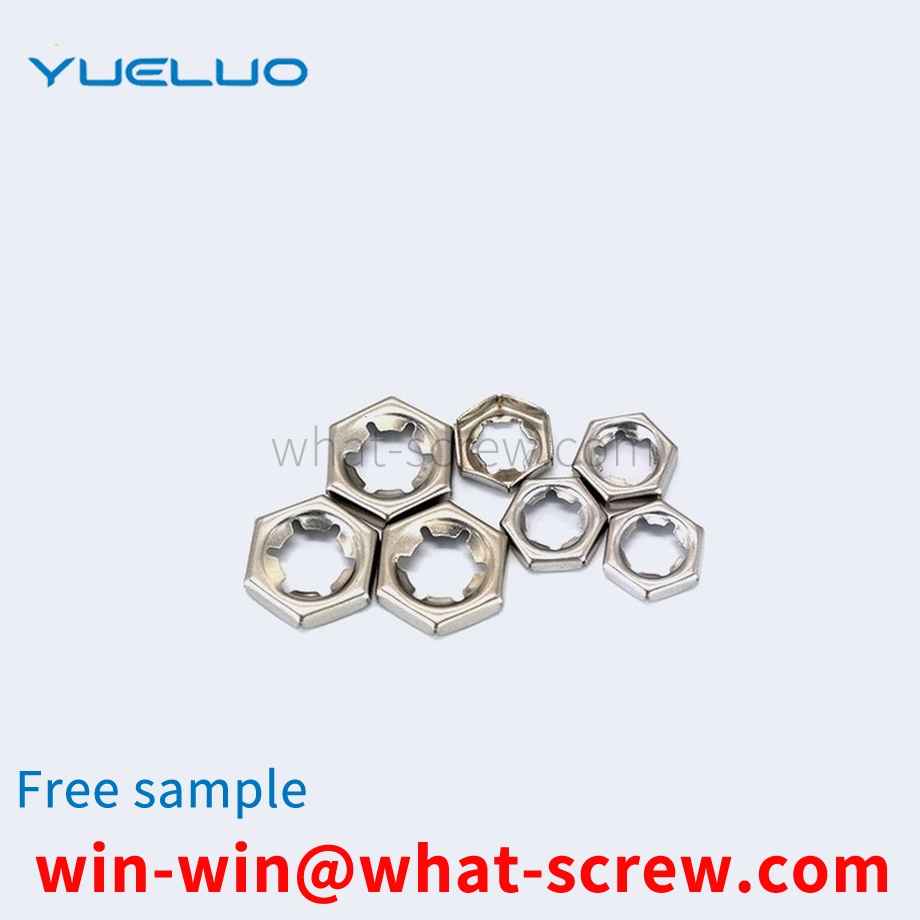Washers are common parts that are annular or annular after compression. The existing standard washers include flat washers, spring washers, serrated lock washers, saddle washers, etc. The end faces are mostly flat or flat after compression. , so it is in surface contact with the workpiece. Generally, after the two workpieces are locked by washers, bolts and nuts, the workpieces cannot move in any direction, so as to achieve the purpose of tightening the two workpieces. In actual production, some workpieces are still required to be properly translated in a certain direction after locking. In order to achieve this requirement, the usual practice is to open a waist-shaped hole on the workpiece that needs to be moved, and the zigzag-shaped bushing is fitted with a flat washer after passing through the waist-shaped hole, as shown in FIG. The edge of the hole is located in the space enclosed by the bushing and the flat washer, and a gap is formed between the workpiece and the bushing and the flat washer, so that even if the bolt passes through the flat washer, the bushing and the workpiece in turn, it is threaded and locked with the nut. tight, the workpiece can still translate along the length of its girdle hole. Obviously, this method can achieve the requirement of proper translation of the workpiece, but the following deficiencies can still be found in the actual assembly. First, before locking, the bushing, washer and workpiece are separated from each other, so it is more inconvenient to assemble; secondly, the lining is The separation structure of the sleeve and the gasket is inconvenient to manage, and the disassembled gasket and bushing are easy to lose and affect the use again.
Many standoffs are used in sheet metal and aluminum profile processing. However, the existing pressure riveting nut column generally adopts a clearance fit between the pressure riveting and the pressed plate, which has no effect on the general pressure riveting, but it has high surface quality requirements for aluminum profiles, especially Painting aluminum profiles will have a certain impact. First, because the bottom holes of pressure riveting on aluminum profiles are generally processed on ordinary punching machines, a tapered hole with a horn will be generated, which will further increase the gap between the pressure riveting nut columns. Make the mutual tightening force smaller, causing some aluminum profile components to loosen the riveting nut when installing screws, resulting in unqualified surface quality. Therefore, we urgently need a way to reduce the matching gap with the bottom hole of the aluminum profile pressure riveting. The pressure riveting standoff is used to increase the wrapping force between the pressure riveting standoff and the aluminum profile hole.
The existing adjusting screw is generally composed of a screw and a nut on the top of the screw. The screw is driven to rotate by means of a screwdriver, and then the screw is driven to rotate. In and out, adjusting other objects connected to it and changing position accordingly.
It is suitable for plates of various thicknesses, with a minimum thickness of 0.8mm. When using, the tail number Z corresponding to size A must be determined according to the thickness of the plate and the specification of the nut. The user selects samples and orders according to the tail number in the table according to the thickness of the plate; Accurate control, processing according to the tolerance size of 0-+0.075mm, is punching, and the nut should generally be installed from the broken surface of the plate. The installation process is generally achieved through press riveting operations, and must not be impacted and knocked in.
The difference between high-strength bolt friction type and pressure-bearing type connection: High-strength bolt high-strength bolt connection is to clamp the plate of the connecting plate through a large tightening pre-pressure in the bolt rod, which is enough to generate a large friction force, thereby improving the connection. The integrity and stiffness of the bolt can be divided into two types: high-strength bolt friction type connection and high-strength bolt pressure type connection according to different design and force requirements when subjected to shear force. The essential difference between the two is that the limit state is different, although It is the same kind of bolt, but it is very different in terms of calculation method, requirements, and scope of application. In the shear design, the friction type connection of high-strength bolts is the limit state when the external shear force reaches the possible maximum friction force provided by the bolt tightening force between the contact surfaces of the plates, that is, the internal and external shear force of the connection is guaranteed not to exceed maximum friction. The plate will not undergo relative slip deformation (the original gap between the screw and the hole wall is always maintained), and the connected plate will be elastically stressed as a whole. In the design of shear resistance, the external shear force is allowed to exceed the maximum friction force in the high-strength bolt-bearing connection. At this time, relative slip deformation occurs between the connected plates until the bolt rod contacts the hole wall, and then the connection depends on the bolt rod. The shearing of the body and the bearing of the hole wall and the friction between the contact surfaces of the plates jointly transmit the force, and finally the shearing of the shaft or the bearing of the hole wall is regarded as the limit state of the connection shearing. In a word, friction type high-strength bolts and pressure-bearing high-strength bolts are actually the same type of bolts, but whether the design considers slippage. Friction type high-strength bolts can never slide, and the bolts do not bear shear force. Once slipped, the design is considered to reach a state of failure, which is technically mature; pressure-bearing high-strength bolts can slide, and the bolts also bear shear force, and the final damage is equivalent to ordinary Bolt failure (bolt shearing or steel plate crushing).
We have many years of experience in the production and sales of screws, nuts, flat washers, etc. The main products are: expansion bolts with hooks, lift screws, flat head star bolts, steel pins and other products, we can provide you with fastening suitable for you. piece solution.



















 Service Hotline
Service Hotline




